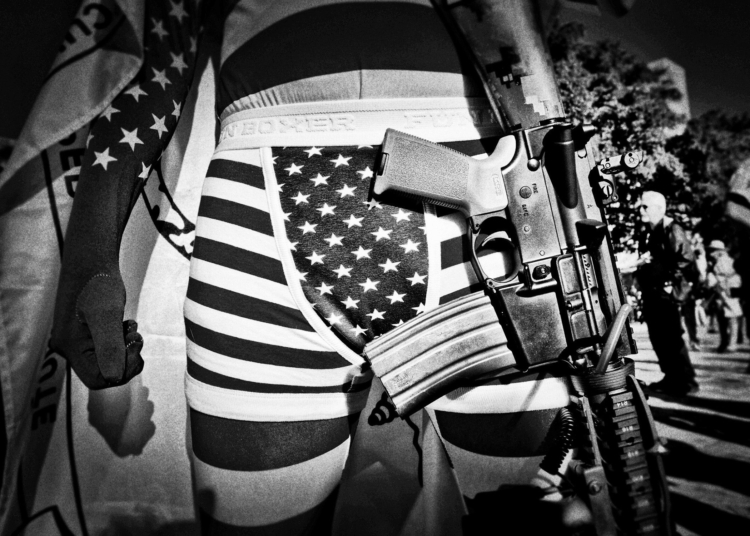This article explores the evolution of small arms from the invention of flintlocks to modern assault rifles. It discusses how small arms development has had a significant impact on warfare and society. The article covers the advancements of flintlocks and early firearms, the age of rifling and revolvers, the rise of automatic firearms during the World Wars, and the development of assault rifles in the modern era. It also touches on the future of small arms development and the ethical implications of increasingly powerful firearms. Overall, the article highlights how small arms have shaped the course of history and the importance of considering the consequences of their evolution.
From Flintlocks to Assault Rifles: A Journey through Small Arms Development
Introduction
Throughout history, humans have experienced countless developments in various fields, and weaponry is no exception. The development of small arms, in particular, has had a significant impact on warfare and society as a whole. From the invention of flintlocks to the modern assault rifles, this article explores the evolution of small arms and how they have shaped our world.
Flintlocks and Early Firearms
The first significant advancement in small arms can be traced back to the invention of the flintlock mechanism in the 17th century. Prior to this, early firearms such as matchlocks and wheellocks were widely used. However, flintlocks revolutionized the field by providing a more reliable ignition system. The flintlock mechanism employed a piece of flint striking against a steel plate, creating sparks that ignited gunpowder and propelled a bullet forward with greater accuracy and efficiency.
During the 18th and 19th centuries, flintlocks dominated military engagements, with muskets becoming the primary infantry weapon. Muskets were muzzle-loaded shoulder firearms, capable of firing a single round per minute in the hands of a skilled soldier.
The Age of Rifling and Revolvers
The 19th century witnessed two significant developments that shaped small arms technology – rifling and revolvers.
Rifling, the process of cutting helical grooves into the barrel of a firearm, improved accuracy by causing the bullet to spin as it traveled down the barrel. This spin stabilized the trajectory, dramatically increasing range and precision. Rifling also introduced the concept of breech-loading, where the bullet was loaded from the rear of the barrel, allowing for faster reloading times.
Revolvers, introduced in the mid-19th century, gained popularity due to their ability to fire multiple rounds without the need for reloading. These handheld firearms, equipped with a rotating cylinder holding several cartridges, allowed for quick follow-up shots and proved invaluable in close-quarters combat.
World Wars and the Rise of Automatic Firearms
The early 20th century marked a turning point in small arms development with the advent of automatic firearms, propelled by the destructive power of World War I. This period witnessed the rise of machine guns and semi-automatic rifles.
Machine guns, such as the infamous Maxim Gun and the later-developed Browning Automatic Rifle (BAR), were capable of sustained, rapid fire, with some models firing up to 600 rounds per minute. These weapons played a significant role in trench warfare and had a devastating impact on opposing forces.
Semi-automatic rifles, on the other hand, offered individual soldiers the ability to fire multiple rounds without manually reloading after each shot. The most notable example was the M1 Garand, widely used by American forces during World War II. This advancement gave infantry soldiers a superior firepower advantage over bolt-action rifles, improving combat effectiveness.
The Modern Era: Assault Rifles and Beyond
The post-World War II era saw the development and widespread adoption of assault rifles, further revolutionizing small arms technology. The introduction of the AK-47 by the Soviet Union and the M16 by the United States exemplified this shift. Assault rifles combined the best features of previous small arms, offering select-fire capabilities, intermediate cartridge power, lightweight design, and high-capacity detachable magazines.
Modern assault rifles are characterized by their versatility, ease of use, and effectiveness in various combat scenarios. They have become the standard infantry weapon for military forces worldwide.
The future of small arms development is focused on further enhancing accuracy, reducing weight, improving reliability, and incorporating advanced technologies such as integrated optics and smart ammunition. However, the ethical aspects of continued development and the potential implications of increasingly powerful firearms remain subjects of debate.
Conclusion
From the primitive flintlocks to the highly sophisticated assault rifles of today, the development of small arms has forever changed the landscape of warfare and shaped the course of history. As technology continues to advance and societies evolve, it remains crucial to consider the consequences and implications of the ever-evolving world of small arms.












